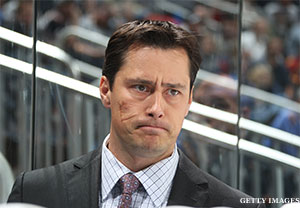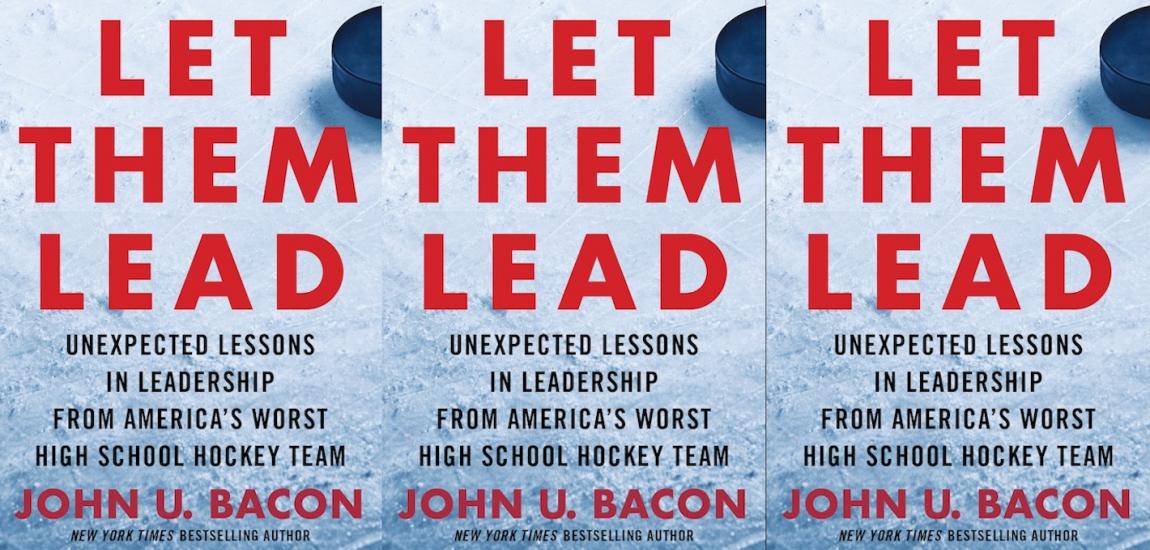Hockey is, above all else, a reaction sport. From the flick of the goalie's mitt to the blast of the one-timer, its beauty and power lies in its quick-change intensity. Part of the reason there's no Friday Night Lights in hockey is that drama doesn't build like a fire -- it explodes like a firecracker. During the playoffs, fans and reporters try hard to get a sense of why one team is winning or losing, and players lean on crutch phrases like "playing our game" and "time and space," but hockey games are often won and lost simply because one guy was a hair faster than another.

That's what makes Tampa Bay's current playoff stampede so remarkable. The Lightning is winning, in a sense, because the team is slower than its opponents. Its players are flawlessly executing a rarely-used system that allows them to be more patient, less jumpy, and ultimately less tired at this exhausting time of year. The Lightning beat two-time Eastern Conference champion Pittsburgh in seven games, and then swept Washington, the No. 1 ranked team in its conference. Yes, a lot of the credit goes to 41-year-old goaltender Dwayne Roloson and stars like Vinny Lecavalier and Martin St. Louis, but even more credit should go to a system that vaulted a 12th-place, sub-.500 team to a perch within view of the Stanley Cup Finals.
The scheme, brought to the team this season by new coach Guy Boucher, is called the 1-3-1. It sounds like a zone defense from basketball, and that's not wholly inaccurate. Tampa arrays itself like a huge plus sign on the ice. Instead of having three forwards at the front and two defensemen behind them, a single defenseman stays at the back while his partner moves up to join two forwards in a logjam at the middle of the ice. Then, a single forward heads to the front to attack and distract the opposition. "It's stunning to look at," says TV commentator Darren Pang.
While most teams rely on dumping the puck into the opponent's end and giving chase -- quite a tiring process -- the Lightning allow the puck to come to them by clogging up the middle, setting up its three-man wall, and daring red rover to come over. Assistant coach Martin Raymond explains it as a three-car police barricade on a three-lane freeway, with a mounted cop at the front and a thief lingering in the back.
The 1-3-1 is not unheard of in hockey, but traditionalists doubted whether it would work as a first option in at the top level of the sport. This season, thanks to Boucher, they have an answer.
The system, in theory, saves time and energy in three ways:
1) Forwards don't have to bombard the opponent's zone like kamikaze fighter jets.
2) Players are caught out-of-position less, meaning less time spent hurrying back into place.
3) Defensemen have to face fewer 3-on-2 and 2-on-1 situations.

And perhaps most importantly: The real work in learning the system was done back in September and October, so while other teams are trying to "raise it up a notch" when the playoffs arrive, the Lightning can just keep tinkering with the 1-3-1, which opponents haven't figured out how to beat. That saves mental time and energy.
"I've never played anything like it," says second-year defenseman Mike Lundin. "The goal is getting the puck, and it doesn't matter where. You can stop thinking as much because you're always prepared."
That can't be underestimated during playoff time, when nerves get more frayed as the stakes get higher. A lot of players fear making the mistake the costs the season, and so a well-defined role takes the edge off. Each player can do his job rather than trying to overcompensate for someone else's errors. That's especially important for a team with a young defense that, quite frankly, isn't the most vaunted group in the league.
"It helps you calm down," Lundin says. "We just have to read our cues. It's not, 'Uh oh,' I better get back in position."
The other, more subtle advantage is the blur between forwards and defensemen. There's less potential for finger-pointing when a defenseman and a wing play on the same "line." Every forward (except one) is a defenseman and every defenseman (except one) is a forward. The Lightning have been playing 11 forwards and seven defensemen, instead of the usual 12 and six.
"People respond and react together," says forward Dominic Moore. "Everyone has a role within the system."
That has created some novel stars on this team, like Moore (below), Sean Bergenheim and Eric Brewer. "The heroes have been the grunt guys," says Pang. "They've been lifting this team."

So how do you beat the 1-3-1? Some teams have tried to pass the puck back and forth, from defenseman to defenseman, to get the "plus" out of position. Others have sent one player streaking through the barrier while others try to find him with a long pass. Nothing has worked consistently. Washington's Alex Ovechkin, the most exciting player in the NHL, was held to four points in four games. "It's incredibly difficult to penetrate," says Pang. Ironically, the key to beating it might be (of all things) even more patience, as Tampa has occasionally broken the formation when opponents wait for something to open up. (For a far more intelligent description of the 1-3-1, visit Japers' Rink.)
Skeptics rightfully ask what will happen when such a conservative plan is blown up by an in-game deficit. How will the 1-3-1 succeed when the team is down two or three goals?
It's a good question, but it hasn't required an answer yet. In Game 3 Tuesday, the Caps held a 3-2 lead and lost it when the Lightning scored the final two goals of the game. That's about as dangerous it's been for a team that was known as recently as last season for wide-open, even reckless play.
"We've surprised ourselves with how quickly we could transform," says star forward Steven Stamkos. "We've been able to shut down the other team. Even in practice, against each other, it's hard to get through."
So while teams that play Tampa must deal with the kind of confusion and frustration that slows their pace, the Lightning look relatively faster by playing more deliberately.
"Hockey is a reaction sport," says Stamkos. "And when we're in position, everyone knows how to react."
Now how will the Lightning's Eastern Conference Finals opponent react?




